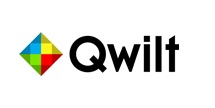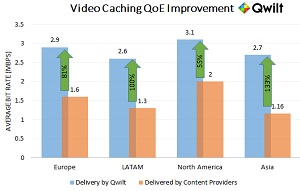Qwilt Stakes Claims On OTT Video Quality

Qwilt has long claimed that its “transparent” caching platform can help cable operators and other broadband ISPs keep over-the-top video bandwidth in check while also improving overall streaming quality, and now the vendor says it has some numbers to back up those claims.
In its first annual report, Qwilt claimed that its systems, which cache popular content from sources such as YouTube and Netflix at the network’s edge, handled more than 50% of OTT video traffic, while also providing an 80% boost in video streaming quality during peak times. Qwilt based those findings by comparing and measuring the average bitrate delivered on customer networks during peak viewing using its transparent caching system and video streams delivered by “upstream content providers” that did not rely on transparent caching. The global study tallied data from networks running in North America, South America, Europe and Asia, Qwilt said.
Transparent caching systems from vendors as Qwilt and PeerApp are growing in popularity as network providers noodle new ways to handle the load as OTT video streaming increases.

“Video is going to be the main driver of traffic and network expansion into the next decade,” Alon Maor, CEO and co-founder of Qwilt, said.
Deploying caches at the edge of the network to alleviate the strain is not a new concept. Netflix, for example, is touting Open Connect, a private edge caching system that it offers for free to ISPs. Qwilt, which has recently added Mediacom Communications to its customer list, argues that its transparent approach, which can handle traffic from Netflix and other sources, offers similar benefits without having to let private, proprietary edge caching systems from Netflix, Google and others onto the network.
Maor said two of the largest five U.S. cable operators are deploying Qwilt’s transparent caching technology. Its flagship product is the QB-Series Video Fabric Controller, a platform that monitors video traffic on operator networks, identifies popular and trending video titles, and then stores those titles at the edge of the subscriber network so MSOs and other carriers can save on online video transport costs.
And the idea of transparent caching is evidently getting broader cable industry attention. According to Maor, CableLabs is exploring interoperability specifications for transparent caching systems.
Multichannel Newsletter
The smarter way to stay on top of the multichannel video marketplace. Sign up below.
CableLabs has not yet commented about the scope and status of that work, but it would presumably seek to create a common interface that would enable MSOs to deploy transparent caching products from multiple vendors.
More about CableLabs’ activities around transparent caching will be covered in the December 2 issue of Multichannel News.
